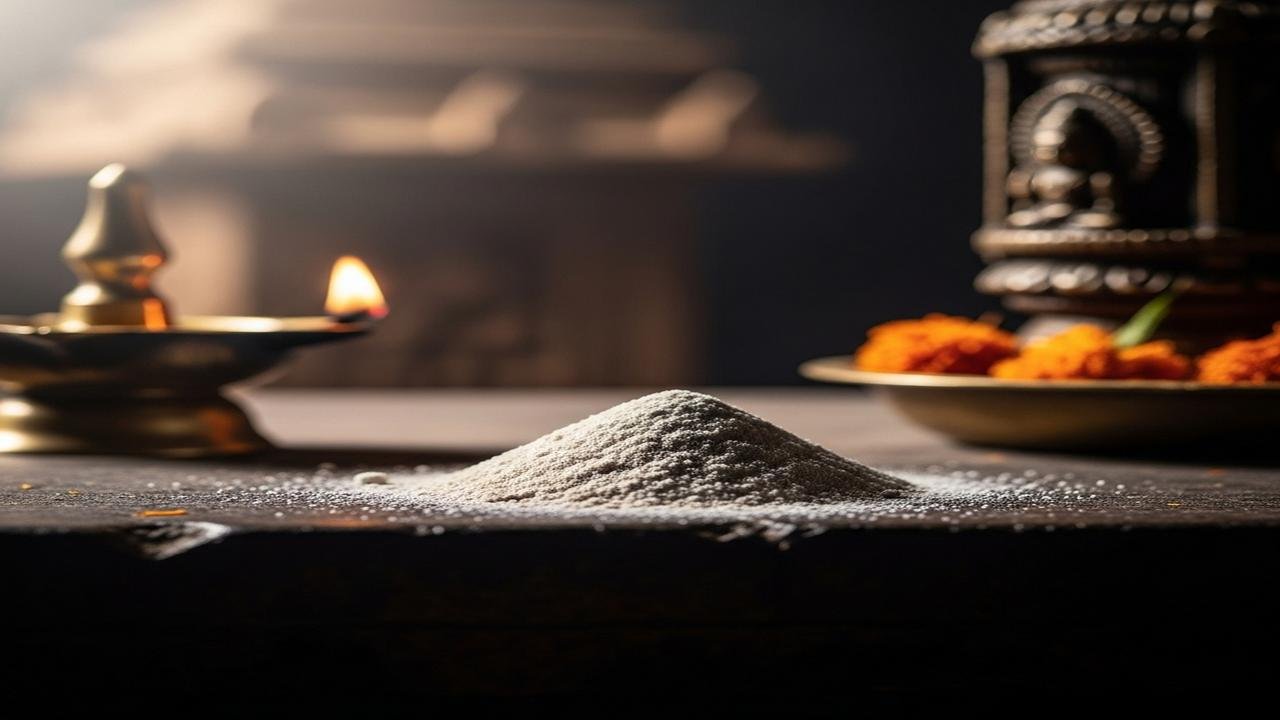The Secret of Vibhuti, Why Sacred Ash Changes Lives

The Sacred Ash (Vibhuti): A Story of Smoke, Devotion, and Memory
When I was a child, my grandmother would wake before dawn and light a tiny lamp beside the family shrine. After her morning prayers, she spread three white lines of ash across her forehead, closed her eyes, and smiled. That soft, smoky powder — vibhuti — seemed ordinary, yet it carried a depth that shaped the rhythm of our home. This gentle ritual opened a world of meaning that I learned to carry with me.
What is vibhuti? Vibhuti, also called sacred ash or bhasma, is the white ash made from burning dried wood, cow dung, or specific herbs during sacred fires. In many Hindu traditions, it is consecrated in a yajna (sacred fire) or temple fire, becoming not just ash but a living symbol of spiritual truth.
Symbolism and spiritual meaning The ash speaks of impermanence. It reminds us that all forms — our body, our possessions, our worries — eventually reduce to dust. Yet within that dissolution, there is purity. By marking the forehead with vibhuti, devotees remember that the true self is beyond the body and remains untouched by change. For followers of Lord Shiva, vibhuti also represents his cremation-smoke form: destruction that clears the way for transformation and new life.
Tradition and history The practice of using sacred ash dates back to Vedic times. Fire rituals have long been central to Hindu worship, and ash has been naturally considered sacred from those fires. Different scriptures and regional traditions describe the preparation and use of bhasma, linking it to austerity, renunciation, and protection. Sages and ascetics often wear ash as a sign of detachment from worldly pleasures and a focus on inner growth.
How people use vibhuti In homes and temples, the application of vibhuti follows simple, meaningful steps:
- It is first offered to the deity or consecrated in the temple fire.
- Devotees dip their fingertips and draw one or three horizontal lines on the forehead, or apply a dot at the heart center.
- Sometimes it is mixed with sandalwood or turmeric to combine cooling and purifying qualities.
These actions are small but charged with intention. The touch of ash is a silent vow to live honestly and with awareness.
Vibhuti in daily life Beyond temples, vibhuti becomes a quiet companion. Farmers tap it into the soil during seed-sowing rituals, parents bless their children with it, and yogis use it before meditation to center the mind. During festivals like Maha Shivaratri, large quantities of vibhuti are offered and shared among devotees, strengthening community bonds.
Modern relevance In today’s busy world, vibhuti offers a simple practice to bring presence into the day. It does not require elaborate ceremony — just a moment to remember what matters. For many, wearing the ash is also a visible reminder of values: humility, balance, and the courage to let go. Some urban temples now publish guidelines for preparing eco-friendly vibhuti, connecting ancient practice with environmental care.
Care and respect The ash is treated with reverence. It should be stored cleanly and offered before use. Because it carries sacred energy, many avoid using it casually or as a mere fashion mark. Understanding its roots helps keep the practice heartfelt rather than hollow.
Vibhuti is both a whisper from tradition and a living practice. It teaches through touch and silence, guiding us to face change with steadiness and to seek what lasts beyond form.
Conclusion
May the gentle dust of vibhuti remind you, in small daily acts, of the steady light within. Hold its lesson close: everything changes, but the soul’s quiet truth remains.
